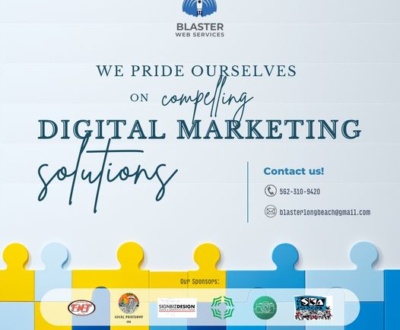Our company has decided to take the social media plunge and you’re tasked with creating a social media campaign.
The only thing is that you’ve never formulated a social media strategy for your company before. Sure, your business has a Facebook and Twitter account that it occasionally posts on with an interesting industry article or to get the word out about a promotion, but that’s about the extent of it.
You hear how your company needs to be present on social media, but you aren’t seeing the results that everyone keeps claiming are yours for the taking.
Effectively posting on social media requires a well-thought-out strategy that must be continually tweaked and re-implemented. The occasional posting about company news or promotions will no longer cut it.
How do you start a social media strategy? There are so many social media channels out there, which ones should you post on? What kind of content should you post to get the most engagement? Should you pay to promote your posts? Do you know where to look to see how well everything is performing?
[Talk to us about managing your social media campaigns.]
Before you get overwhelmed, here is a guide to get you started on the right path of a successful social media strategy for your business:
Step 1: Set Goals and Objectives
Before you start a campaign in any business, you need to have goals and objectives in place to assess progress and know whether you’ve achieved success. A social media strategy is no different. If you don’t have any goals or objectives written out, you won’t know how your campaign is performing. These provide the foundation of your blueprint for your strategy.
Every subsequent course of action within the strategy is aimed at meeting or exceeding these goals and objectives.
With goals and objectives, you can quickly see when and where your social media campaign is going awry and make immediate changes to put it back on course.
When creating goals and objectives, it the S.M.A.R.T method is a good starting point. According to this method, the goals and objectives are to be specific (S), measurable (M), attainable (A), relevant (R), and time-bound (T).
Step 2: Do a Social Media Self-Audit
After creating the goals and objectives for your campaign, you should look at where your current strategy stands.
What social media platforms is your company currently posting on? What kind of material is being posted? How much or little engagement is there? When do you post? How often do you post?
It helps to create a spreadsheet to document your answers to the above questions. Use this spreadsheet and compare it against your strategy’s goals and objectives. Are there things you’re already doing well? What needs changing in order for your goals and objectives need to be met?
Besides looking at the health of your current social media channels, be sure to completely fill out your company’s social media profiles, with a clear, identifiable picture and keywords. Completed social media profiles make your brand easier to find by consumers and it adds to your brand’s credibility and authority.
Step 3: Research
Maybe your company is posting on the wrong social media channels, or posting the wrong type of content, or is currently not on another social network it could leverage for increased attention. Maybe your posts are going out at the wrong time.
It can be tempting to be on as many social media networks as possible. The downside of this is that you will wear yourself out, waste valuable time, and produce hurried, boring, bulk postings.
You need to do some research on your industry, your desired audience, and even your competitors. Where are your ideal audience members most active? When are they most likely to engage? What interests them and what messaging catches their attention?
There are multiple social networks that allow you to gain insights into these questions. Facebook, for example, allows users to target specific audiences, see the interactions on their posts, the best and worst time for post engagement as well as the demographics of those that interact with the posts.
In terms of scheduling posts, there are automation tools such as Buffer and Hootsuite that allow you to synch and schedule posts on multiple social networks in one place.
Observing what your competitors are doing and how well they’re faring on social media can give you tips and tricks on what to try out and what to avoid when formulating and implementing your social media campaign.
Step 4: Create Quality Content
You can be on every social media network and still not get the engagement and conversions you’re looking for because your content is bland, salesy, useless, and impersonal.
You won’t know what to write without first identifying your ideal audience and social media networks. When coming up with content, you want to not only catch people’s attention, but you want to make your brand stand out as an authoritative and trustworthy source of information in your industry.
As you do this, it’s important to design your content to take advantage of each individual platform. Twitter, for instance, only allows for 140 characters and utilizes hashtags. Instagram and Pinterest utilize images. Facebook utilizes text, images, and videos. YouTube utilizes videos.
Your content needs to match the format of the platform, be interesting, and be useful. It should not come off as impersonal or condescending. Have your content make your brand appear as a person, not an organization.
Like putting together a social media audit spreadsheet, and using scheduling tools for posts, creating an editorial calendar can help guide you as to what you write. With an editorial calendar, you’ll know what you’re going to write about and have details.
Step 5: Continued Assessment
Once you research your audience, craft your content, and schedule the posts on the appropriate social networks, you may be tempted to sit back and relax.
If you put a lot of time, resources, and energy into a social media strategy, you want to make sure the ROI is worth it. Otherwise, you’ll remain stuck and stagnant in your efforts.
Nobody wants to stay stuck and not grow.
As with any aspect of internet marketing, things in social media change constantly.
If you post a Facebook post at 2 p.m. one week and get a lot of engagement can turn into an ignored post the next week. Consumers also get bored seeing the same content all the time.
Social media strategies require time and a plan.
Just doing the occasional posting on a few social media channels will not result in a successful social strategy.
A well-performing social strategy begins with goals and objectives. You need to see where your current strategy is, research the best social media channels and your target customers, and create high-quality, useful, and interesting content.
Contact Blaster Web Services for your Web Needs!
About us and this blog
We are a digital marketing company with a focus on helping our customers achieve great results across several key areas.
Request a free quote
We offer professional SEO services that help websites increase their organic search score drastically in order to compete for the highest rankings even when it comes to highly competitive keywords.
Subscribe to our newsletter!
More from our blog
See all postsRecent Posts
- Website As A Source Of Marketing April 22, 2024
- Ready to elevate your online presence? April 17, 2024
- How a Digital Marketing Agency Drives Business Growth? April 16, 2024










